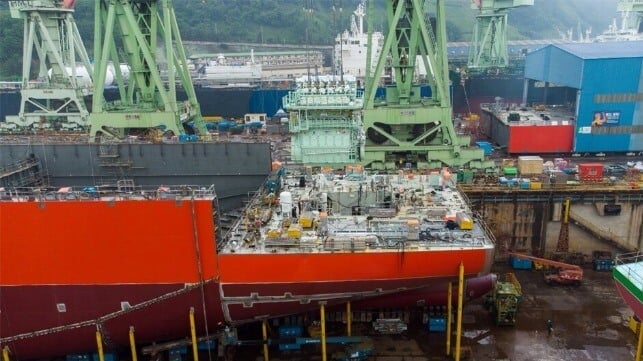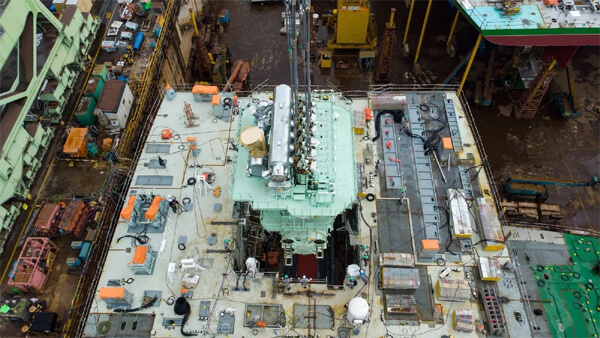First Two-Stroke Ammonia-Fueled Engine Installed as Newbuild Proceeds

The race to launch the first commercial ammonia-fueled engines marked a key milestone, reports marine engine designer WinGD. The first two-stroke engines built from the company’s designs were tested and recently successfully installed in the first new ammonia carriers being built in South Korea. WindGD is highlighting that it became the first engine designer to bring an ammonia-fueled two-stroke engine to market, and the vessels are due to enter service in 2026.
The 52-bore engine was built by HD Hyundai Heavy Industries’ Engine and Machinery Business Unit. WindGD reports that the results from its laboratory test engine runs were confirmed at the factory in South Korea, and the engine has now been delivered to HD Hyundai Mipo, which installed it on the newbuild vessel.
WinGD reports the X-DF-A engine features high-pressure ammonia injection supplemented by a low, targeted pilot fuel dose of around five percent at full load. The engine delivers load handling, dynamic response, and fuel efficiency on par with WinGD’s equivalent diesel-fueled X Engines in both ammonia and diesel operating modes. It critically delivers low emissions and an efficient performance similar to diesel engines.

The first engine was installed in South Korea on a vessel due to deliver to EXMAR in 2026 (WinGD)
The company achieved other key firsts in the development of its first ammonia-fueled marine engine. Lloyd’s Register, which is part of the project, noted that the engines were the first to achieve class approval in September 2022 for ammonia two-stroke engines. They were selected for the newbuilds in 2023 and are being combined with a fuel supply system developed by Wärtsilä Gas Solutions.
WinGD says that further optimization will continue for the second engine in the 52-bore series, which will be delivered later this year.
The engines are being incorporated into the ammonia gas carriers ordered by EXMAR in 2020. Each vessel will be approximately 623 feet in length. They will have a capacity of 45,000 cbm and will be able to transport either ammonia or LPG.
Construction on the vessels began in December 2024 with the first steel cutting. Work started on the second vessel of the class in May 2025. EXMAR has called the ships “a bold step toward a decarbonized shipping industry, and a cleaner future.”
Each of the major engine designers is working on different sizes of ammonia-fueled engines, and each has reported strong progress in the designs and now qualification testing. WinGD reports it has built an early orderbook of around 30 X-DF-A engines, which will be going into not only gas carriers, but also bulk carriers and containerships.
DNV calculates that there are currently 37 vessels on order that will be capable of operating on ammonia as their marine fuel. The bulk of the deliveries will start in 2026 and 2027. As the infrastructure becomes more developed and the regulations are defined, it is anticipated that ammonia-powered engines will increase in popularity as one of the solutions to meeting the industry’s decarbonization challenge.
